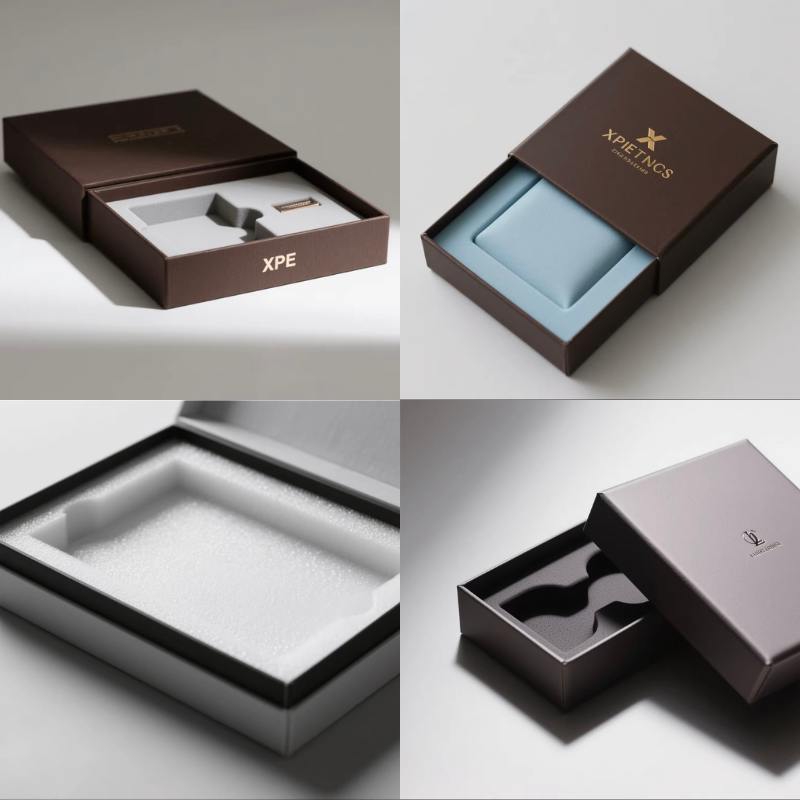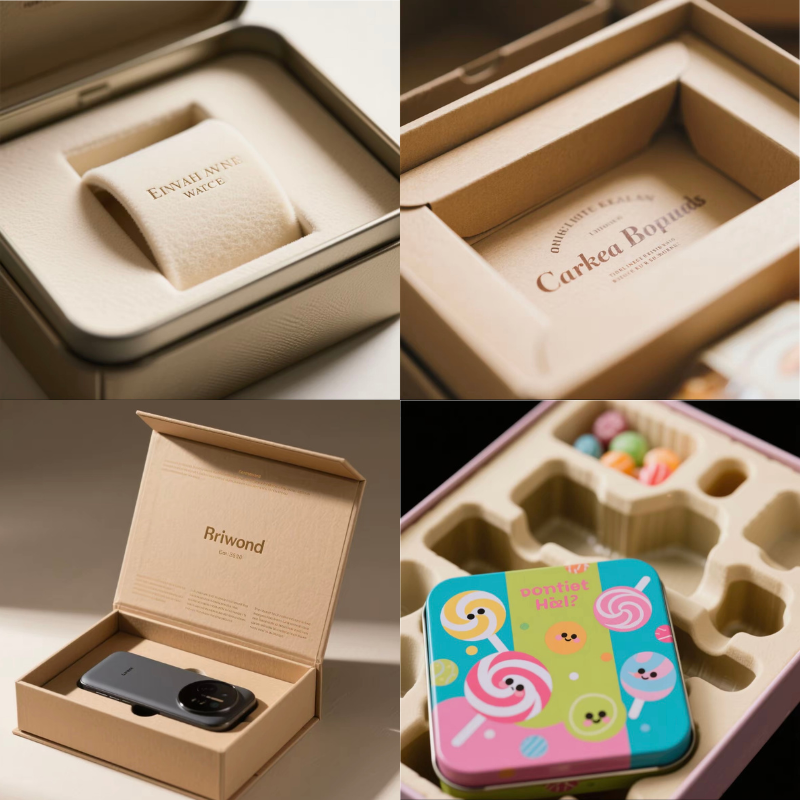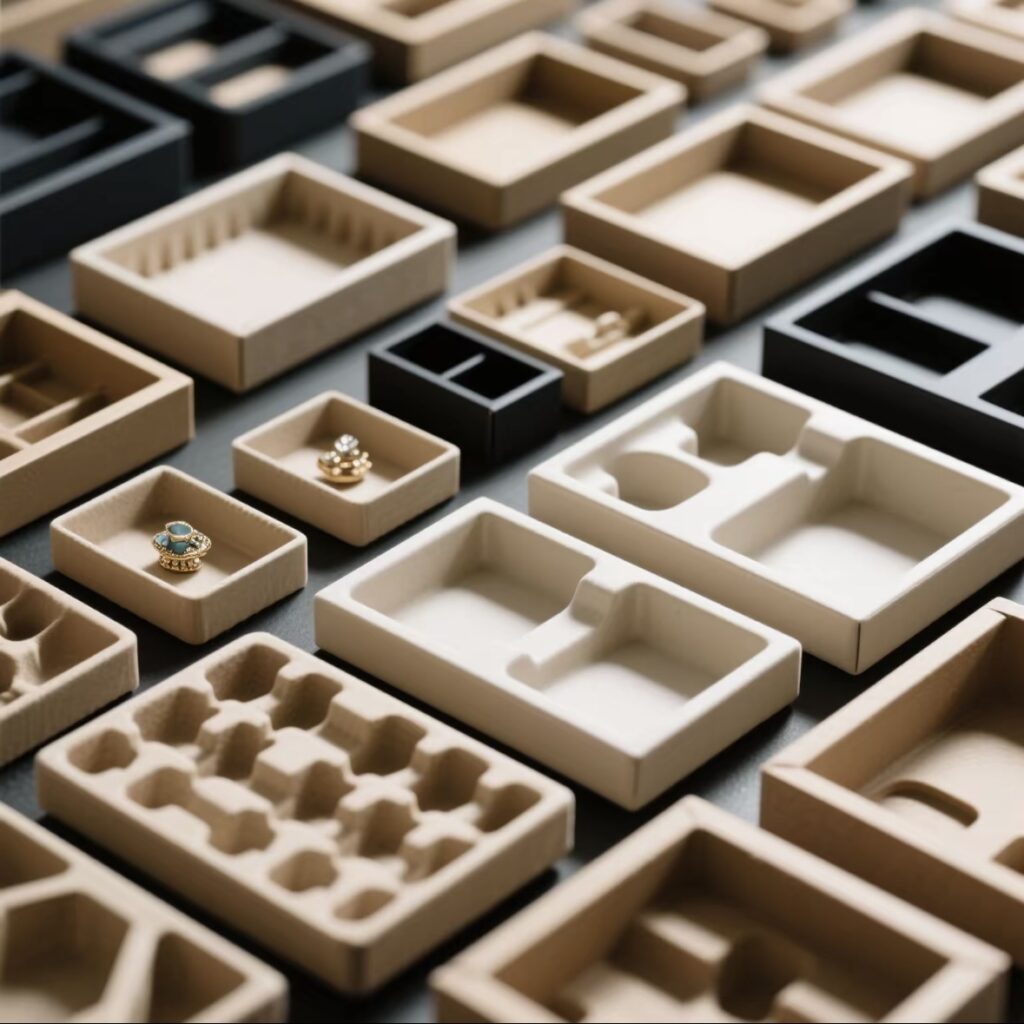EVA Foam Insert
Features: First of all, EVA foam feels soft and offers rubber-like elasticity, making it an ideal choice for packaging inserts. Even at -50°C, it remains flexible. Additionally, it provides good transparency and a glossy surface. What’s more, it maintains strong chemical stability, resists aging and ozone damage, and contains no toxins. Manufacturers produce it in three grades (A, B, C) with thicknesses ranging from 0.5mm to 50mm. On top of that, it resists moisture, absorbs shocks, and withstands pressure.
Applications: Because of these qualities, high-end packaging for cosmetics, watches, jewelry, health products, and luxury goods often uses this material.
EPE Pearl Cotton
Features: To begin with, EPE consists of recycled polyethylene foam, so its eco-friendliness falls slightly below EVA and XPE. However, its large air bubbles and low density make it affordable. Besides that, it resists static, insulates heat, absorbs shocks, withstands pressure, and fights corrosion. It also handles chemicals well and emits no odor. Furthermore, manufacturers can flock it or laminate it with specialty paper.
Applications: Due to these benefits, industries widely use it for packaging eggs, electronics, glass products, fresh produce, and cosmetics.
XPE Foam Packaging Inserts
Features: Unlike EPE, XPE comes from pure raw materials without additives, making it fully eco-friendly. Moreover, it has a smooth surface, small air bubbles, high density, and strong rebound. It feels slightly firm, resists deformation, and insulates well while also blocking water and corrosion. Since manufacturers create it by foaming polyethylene at high temperatures, it looks neat and often appears in tea boxes.
Applications: Thanks to these properties, people prefer it for packaging hardware tools, power tools, tea, cosmetics, perfume, and fragile glass items.

Plastic Vacuum-Formed
Features: This type involves heating plastic sheets until soft, then vacuum-forming them into molds. After cooling, they hold their shape. While they protect items strongly and allow custom shapes, they last less long than other materials. Still, they offer good transparency, flexibility, and cold resistance, plus they cost little.
Applications: For these reasons, food packaging (like mooncake tins, candy tins), electronics, and cosmetics commonly use them.
Sponge Insert
Features: Naturally off-white, sponge yellows over time due to oxidation. That said, it feels very soft and absorbs shocks excellently while insulating well. Manufacturers can mold it into different shapes to secure and protect products during shipping.
Applications: As a result, fragile items like watches, perfume, medicine, and cosmetics often rely on it.
Cardboard Insert
Features: Cardboard offers a common, cost-effective option that also looks elegant. For example, cosmetics or incense packaging often uses it because it provides some protection while allowing printing for a premium look. Types include white cardstock, kraft paper, and metallic paper.
Applications: Consequently, food and electronics packaging frequently feature it.

Corrugated Board Insert
Features: Layered paperboard makes corrugated inserts strong, flexible, and resistant to tearing and temperature changes. They also weigh little, support the environment, and cushion well.
Applications: Therefore, electronics, food, and pharmaceutical packaging widely adopt them.
Pulp Mold Insert
Features: Plant fibers create pulp molds, making them eco-friendly, biodegradable, and shock-absorbent. However, their rough texture limits them mostly to large fragile items.
Applications: Because of this, electronics, glass, ceramics, and medical packaging commonly choose them.
Foam Insert
Features: First of all, foam weighs little and shapes easily, simplifying transport and handling. What’s more, it cushions excellently—when impacted, it compresses to absorb shock, protecting the packaged item. Additionally, it insulates heat well, keeping the internal temperature stable. Another advantage is its chemical stability, meaning external conditions rarely break it down or trigger harmful substances. Best of all, manufacturers can customize it to fit products perfectly, offering secure support and full protection.
Applications: Because of these benefits, electronics, glass products, precision instruments, and other delicate items often use it.

Silk Lining
Features: Silk feels lightweight, smooth, and shiny, delivering a luxurious touch. Since it looks elegant, high-end packaging often features it.
Applications: Thus, premium gifts, luxury goods, and traditional crafts prefer it.
Raffia Grass Packaging Inserts
Features: Raffia grass, imported from Madagascar, stays strong and durable. People often weave it into shapes or use it as loose filling for a natural look.
Applications: For this reason, gift boxes for jewelry, tea, crafts, and weddings incorporate it.
Paperboard Insert
Features: Paperboard remains stiff enough to hold lightweight items like stationery or snacks in place.
Applications: As such, small electronics and food packaging utilize it.
Corrugated Liner with Facing Paper
Features: This type combines cushioning (from corrugation) with a smooth printable surface.
Applications: Hence, large appliances, glass, and ceramics benefit from it.

Contact us, let’s go together on the packaging journey!









